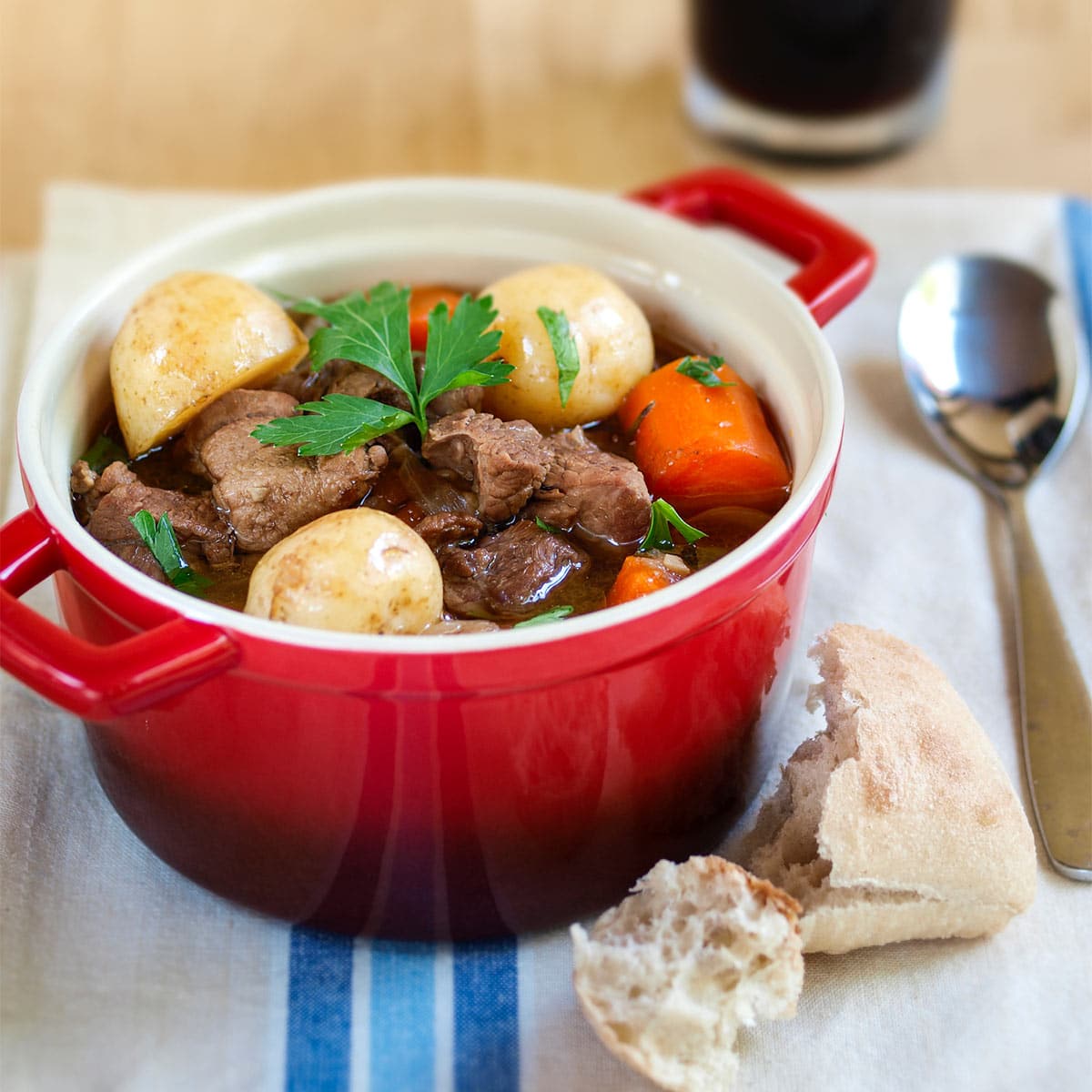Neighbor to the carrot, parsnips can be used in the same ways, but are even sweeter, especially after the first winter frosts or being cooked.
Parsnips are versatile root vegetables that can complement any dish. From stews to roasted veggie medleys, Parsnips are an underrated superstar.
Winter Lamb Stew
4
servingsWarm yourself on a cold evening with this flavorful stew.
Ingredients
- 1 cup
(4 ounces) parsnips, peeled and diced (3/4-inch)
- 2 tsp.
olive oil
- 1 pound
boneless lamb shoulder, cut into 1½-inch chunks
- 3⁄4 tsp.
kosher salt
- ¼ tsp.
coarsely ground black pepper
- 1 cup
(4 ounces) yellow onion, diced into ½-inch
- 1 Tbsp.
all-purpose flour
- 2 tsp.
minced garlic
- ½ cup
red wine
- 2 tsp.
tomato paste
- 3½ cups
brown stock (lamb, beef, veal)
- 2 tsp.
chopped rosemary
- 1 tsp.
chopped savory
- ⅛ tsp.
ground cinnamon
- 1
bay leaf
- 1½ cups
(6 ounces) sweet potato, peeled and diced (3⁄4-inch)
- 1 cup
(4 ounces) celery root, peeled and diced (3⁄4-inch)
- 1 cup
(4 ounces) turnips, peeled and diced (3⁄4-inch)
- 1 cup
olives, whole, pitted
- 2 tsp.
snipped chives (¼-inch)
Directions
Heat olive oil in a medium saucepan over medium-high heat. Add lamb, season with salt and pepper and cook for 7-8 minutes, stirring occasionally until well-browned.
Turn heat down to medium, add onion and continue cooking for 3-4 minutes.
Stir in flour and garlic and cook for another 1-2 minutes. Mix in red wine and tomato paste, then whisk in brown stock.
Season with rosemary, savory, cinnamon, and bay leaf and bring to a boil, stirring occasionally.
Cover, turn down to low and simmer for 45-50 minutes.
Remove cover, turn heat to medium-high and bring to a boil. Add sweet potato, celery root, parsnips, turnips, and olives.
Simmer over medium-low heat for 15-20 minutes until vegetables are cooked through. Top with chives just before serving.
Nutrition Facts (per serving):
- Calories—378 | Total Fat—15g | Cholesterol —74mg | Sodium—1213mg | Carbohydrate—28g | Dietary Fiber —6g | Protein—30g
Facts about Parsnips
Did You Know? (1)
Parsnips are native to Europe and Asia and are an excellent source of your daily fiber needs, providing as much as 13% of your daily fiber.
Did You Know? (2)
The reason parsnips can be used for rich, sweet recipes is because their starch actually turns to sugar after the first frost, while still in the ground. That’s why winter parsnips are sweeter than parsnips from warmer months.
Storing Wisdom:
It’s a good practice to wash any produce as soon as you get it home. To maintain maximum freshness, store parsnips in a tightly sealed plastic bag in the refrigerator.
How to Choose:
Look for parsnips that are firm and feel dense for their size. They should have roots intact. Remember the whiter the flesh, the sweeter the taste. Keep in mind you don’t want shriveled or yellowing skin on the outside, and bigger is not necessarily better. When prepping, peel the parsnip and cut out any woody core.


